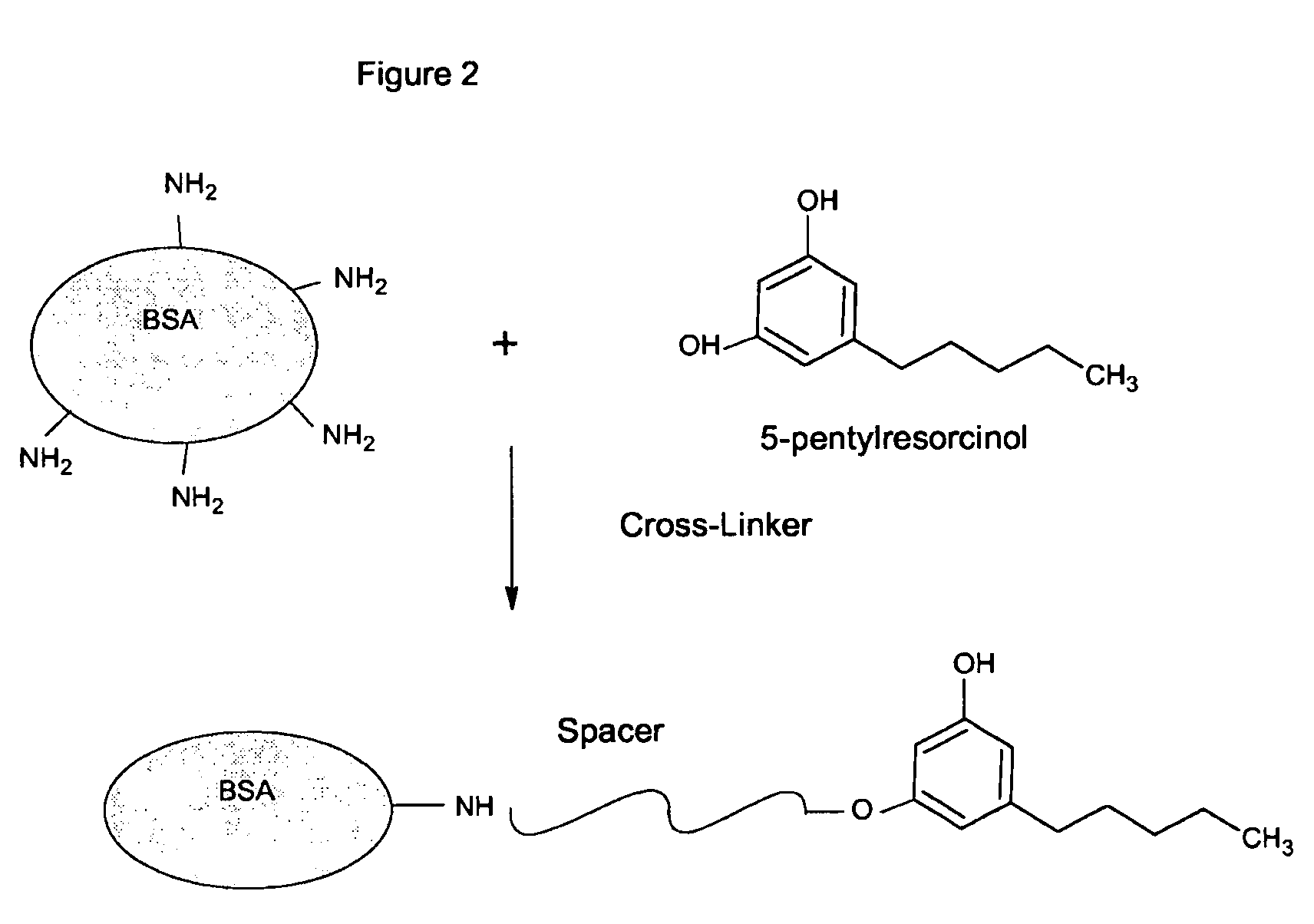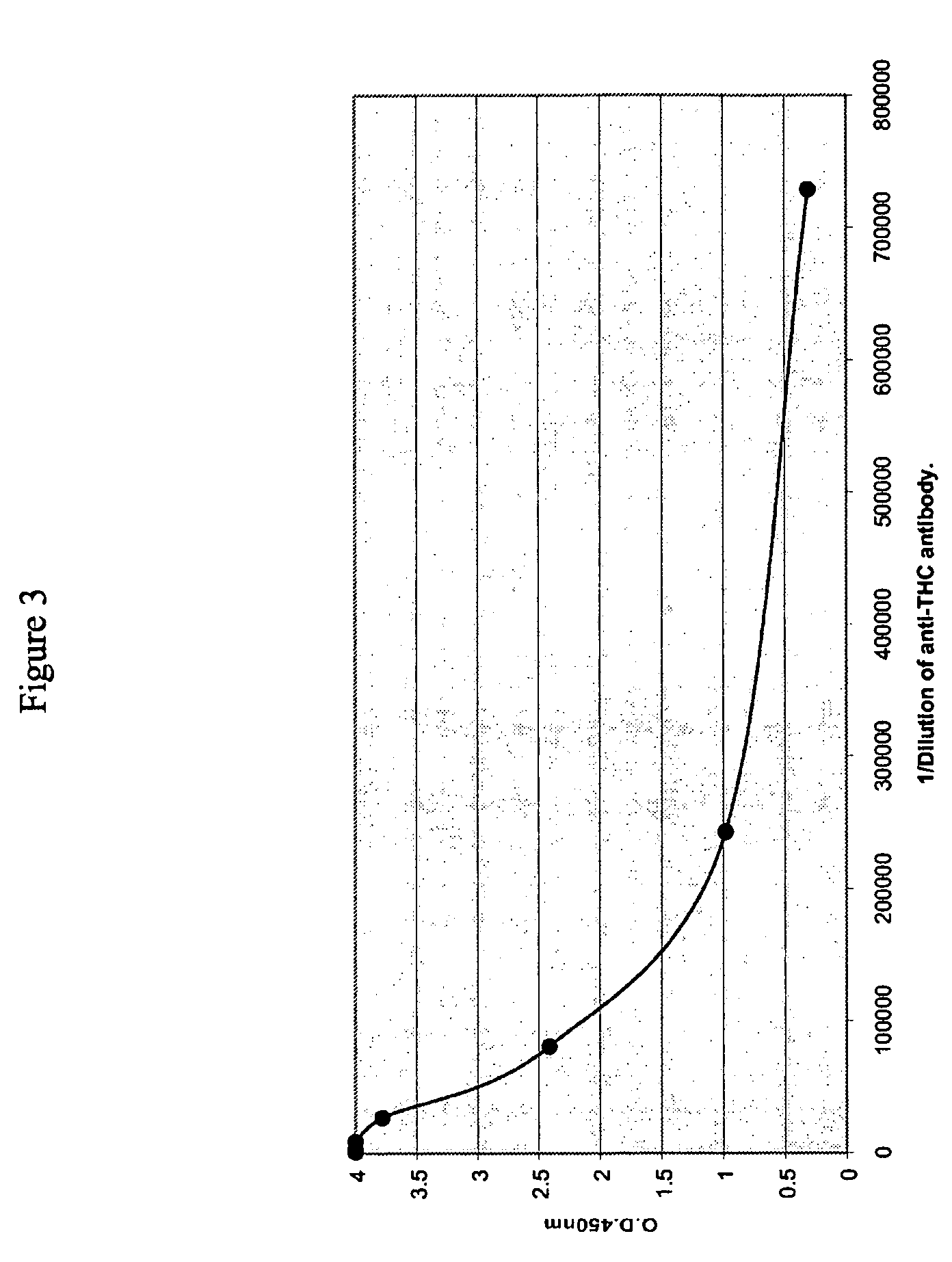Delta-9-tetrahydrocannabinol detection method
a detection method and tetrahydrocannabinol technology, applied in chemical methods analysis, chemical indicators analysis, instruments, etc., can solve problems such as major, non-specific chemical methods, and unsuitable point-of-care testing
- Summary
- Abstract
- Description
- Claims
- Application Information
AI Technical Summary
Benefits of technology
Problems solved by technology
Method used
Image
Examples
example
I. Preparation of Bovine Serum Albumin-THC (BSA-THC) Conjugate
[0048]THC-COOH was conjugated to BSA using the carbodiimide coupling procedure. The carboxylic acid group of the drug was linked to the side-chain-amino groups of lysine residues as follows:[0049]1. Dissolve 5.0 mg of delta 9-THC acid (Helena, Cat no. DR021) in 1 ml of ethanol.[0050]2. Add 1.0 ml of dimethylformamide (DMF).[0051]3. Add 10 μl of N-methylmorpholine (NMM, Sigma Co., Cat. No. 67869)[0052]4. Add N-hydroxysuccinimide (N-HS), 6.3 mg in 50 μl of dimethylformamide (DMF). Stir mixture in the dark at room temperature for 24 hours.[0053]5. Weigh out 30 mg of bovine serum albumin in a brown bottle. Dissolve in 4 ml of 0.1 M sodium bicarbonate.[0054]6. Add the activated drug drop-wise to the BSA solution. Stir overnight at room temperature in the dark.[0055]7. Add 100 μl of 2 M Tris and keep stirring for another 60 minutes.[0056]8. Dialyse overnight vs. phosphate buffered saline, pH 7.3 containing 0.1% sodium azide.[00...
PUM
| Property | Measurement | Unit |
|---|---|---|
| concentration | aaaaa | aaaaa |
| pH | aaaaa | aaaaa |
| cross-reactivity | aaaaa | aaaaa |
Abstract
Description
Claims
Application Information
 Login to View More
Login to View More - R&D
- Intellectual Property
- Life Sciences
- Materials
- Tech Scout
- Unparalleled Data Quality
- Higher Quality Content
- 60% Fewer Hallucinations
Browse by: Latest US Patents, China's latest patents, Technical Efficacy Thesaurus, Application Domain, Technology Topic, Popular Technical Reports.
© 2025 PatSnap. All rights reserved.Legal|Privacy policy|Modern Slavery Act Transparency Statement|Sitemap|About US| Contact US: help@patsnap.com



